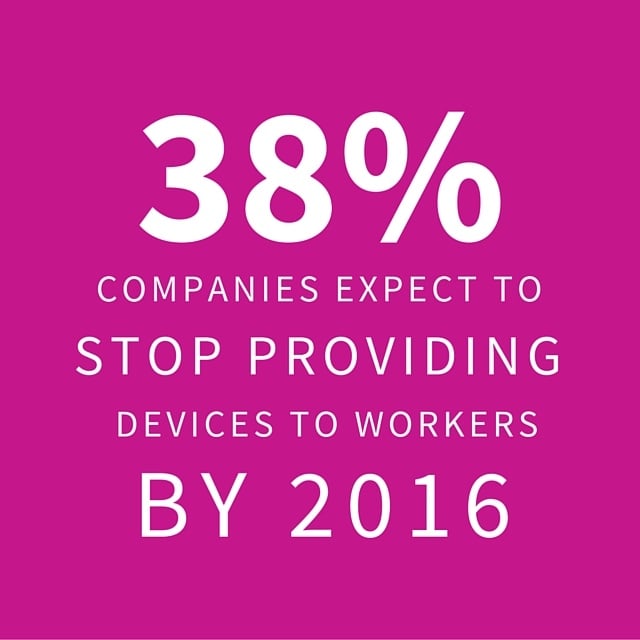Bring your own device (BYOD) refers to employees who bring their own computing devices e.g. smartphones, laptops and tablets to the workplace instead of relying on the company’s hardware. Reasearch reveals 53% of information users use their own personal devices for work.
Benefits of BYOD
 IT departments often find it difficult and time consuming to update company hardware and software with the latest versions of technology. BYOD allows users to be self-sufficient and bring in the type and version of technology they want. This allows people to have the latest models with the latest features and capability.
IT departments often find it difficult and time consuming to update company hardware and software with the latest versions of technology. BYOD allows users to be self-sufficient and bring in the type and version of technology they want. This allows people to have the latest models with the latest features and capability.
You may also like this related blog: BYOX: Bring Your Own ‘x’
Having the ability to work on devices you’re comfortable with will increase employee satisfaction and productivity for the business. People can work more flexibly in and out of the office, which in turn could be an advantage over competitors – employees and graduates today expect to use personal smartphones at work and may avoid organizations that are more traditional.
Challenges with BYOD
Bring your own device creates some big problems and concerns for IT departments, such as putting your company’s private information at risk. To combat this, IT teams must create a security policy that outlines governance about managing the devices to ensure network security isn’t threatened.
IT teams will find it much easier to provide approved hardware and software as they can retain full control and ownership of it. Once people bring in their personal devices the lines become more blurred.
Measures need to be put in place for if the employee’s device is lost, stolen or hacked. There are also access implications, like what information a company can have access to? Especially if an employee choses to leave the company, how much of the information does the company own and how do they retrieve this data?
A BYOD environment can also be pricey. IT hardware spend is reduced, but it may cost more for a business to integrate their software across multiple platforms and support a large range of employee devices.
BYOD – Just a fad?
A CompTIA Information Technology Association survey found 53% of private companies banned BYOD. However it seems most companies are offering employees more of the technology they want – which on the upside means people have less reason to leave or complain.
Cloud-based technology has allowed people a great deal of flexibility. You can keep your personal photos, music and other data in a personal cloud, which means if you move workplaces it’s easy to upload them to a new device.
There’s no definitive answer as to whether or not BYOD is right for your workplace. Every organization needs to consider the advantages and disadvantages of offering a BYOD culture before implementing one. But it seems that BYOD is here to stay, so it’s only right that companies begin to consider changing too.
Sources
http://www.computerworld.com/article/2948470/byod/the-bring-your-own-device-fad-is-fading.html